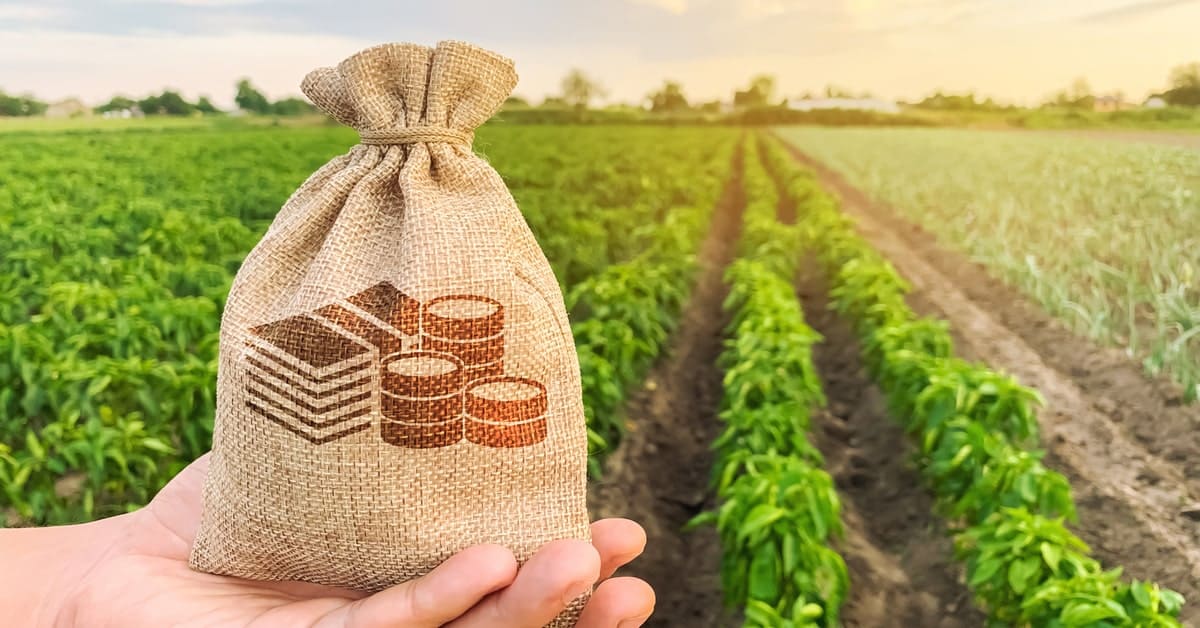By Nik Milanovic*
In recent years, technology news headlines have been dominated by the word “fintech”. From large fundraising to client growth, product launches and financial turmoil – new disruptors via fintech are everywhere in consumer banking, credit, payments, investing and cryptocurrencies.
With all this, the impression is that there are good reasons to think that the peak of this fintech movement has been reached. But this is not the reality. Today, the industries where most fintechs are focused represent just a fraction of the US$23 trillion global financial services market.
Products like Cash App, Robinhood and Chime (financial services companies) address markets that are intuitive to everyday consumers, but these consumers represent just the tip of the iceberg.

The next wave of fintechs will focus on improving markets that are lesser known and less “exciting”, but fundamental to the global economy – and one of the biggest markets poised for disruption is agricultural finance. The year 2022 has seen a quiet but steady rise in fintech products being built for the big agriculture industry, and they are just getting started.
But the question is: why change a type of financing so far done in agriculture for another that is starting? For the two best reasons technology can answer: the size of the market and the limitations of current service providers available to that market.
Looking at the US alone, while farms contributed US$134.7 billion to 2020 GDP, industries dependent on agriculture – food manufacturing, food services, textiles – contributed more than US$1 trillion to the economy, representing more than 5% of annual GDP. For many emerging markets, the share of agriculture in the overall economy is significantly higher – reaching 25% in some countries (such as Brazil, estimated at 25.5% of GDP in 2022 and 27.5% in 2021).
And yet, financial services are not as competitive as one would expect in an industry the size of agriculture. Looking back at the US market – one of the best served in terms of farm finance – farm debt continued to rise through 2022, interest rates on farm loans are rising sharply, and farm loans continue to rise as the number of market-focused banks continue to decline.
UNDERSTANDING THE FINTECH WORLD
In a world where the demand for food is expected to increase by 70% by 2050, requiring US$80 billion in annual investments, traditional and slow players create a large and growing opportunity for new entrants.
While “farm finance” refers to a broad and heterogeneous set of activities – equipment lending, supply chain finance, commodity trading, farm banking – emerging fintechs have focused on a few sub-sectors:
AGRICULTURAL LOANS
Oxbury Bank in the United Kingdom raised funds twice last year to originate £650 million in agricultural loans to farmers in that nation. Tarfin in Turkey and Agro.Club in Eastern Europe provide supply chain finance to underserved medium-sized farmers, who often have to turn to their agricultural input suppliers for loans that are at exorbitant rates.
Companies such as Crowde in Indonesia and Campo Capital in Brazil have created a peer-to-peer agricultural lending network. Players like Traive, AgroLend, Terra (Luna) and Agree handle agricultural loans across Latin America. ProducePay allows Mexican farmers to take out loans secured by their US buyers.
AGRICULTURAL PAYMENTS
Agriculture tends to be a lagging industry in the use of new payment methods, with transaction products such as checks still estimated at 90% of the industry. Bushel, an up-and-coming startup in the US market, recently launched a payments enabler, digital wallet and embedded payments feature that connects buyers to 40% of US grain suppliers.
STRATEGIC COMMODITY PRICING & TRADING DATA
The so-called deep markets (high volumes with a small margin between buying and selling) of grains, cattle and other commodities are critical to the smooth functioning of agricultural supply chains, and accurate price data is the lifeblood of the industry.
These markets allow buyers to hedge against rising food prices and large farming operations hedge against supply chain price fluctuations. FarmLead is a company focused on digitally connecting spot grain trading networks and integrating trade data with other digital tools for farmers and grain buyers.
INSURANCE
Agriculture is the most sensitive industrial sector when it comes to climate change risks, because of the incidence of droughts, floods and natural disasters. Insurance is incredibly vital to preventing the collapse of precarious agricultural systems, but traditional insurers have a hard time underwriting farms.
That’s where platforms like World Cover, which provides satellite-based weather insurance to small farmers in countries like Ghana, Uganda and Kenya, or GramCover, focused on providing access to insurance for farmers in India, come in.
MARKETPLACES
While e-commerce platforms like Shopify have opened up global retail marketplaces for independent merchants, most farm marketplaces still operate as centralized offline exchanges. In Kenya, startups like Twiga Foods, FarmShine, ShambaPride and M-Farm have created platforms to connect farmers directly with buyers and list easily accessible pricing information.
BANKS AND FINTECHS
The biggest prize for fintechs is acquiring new customers in a vertical such as lending or insurance and selling banking products created specifically for their needs. DeHaat, India provides financial services to farmers in credit, material supply, consulting and sales.
New Zealand based Figured provides financial planning tools for farmers. FarmDrive creates a credit score for Kenyan farmers. Seso provides hiring, workforce management, and asset management tools to simplify US farm payrolls.
Over the next decade, we will see a parallel market of products across all fintech categories – banking, lending, savings, payments, investing, HR, payroll and commerce – focused specifically on agriculture. While the sector might not be the most obvious market for a fintech, it is definitely one of the biggest and most important. The world must watch many of these companies grow rapidly and dominate the next wave of fintechs.
*Nik Milanovic is a contributor to Forbes USA. He writes about financial technology, specifically its impact on financial inclusion and opportunities for future innovation. He is a consultant for Tribal Credit.
With information from Forbes

